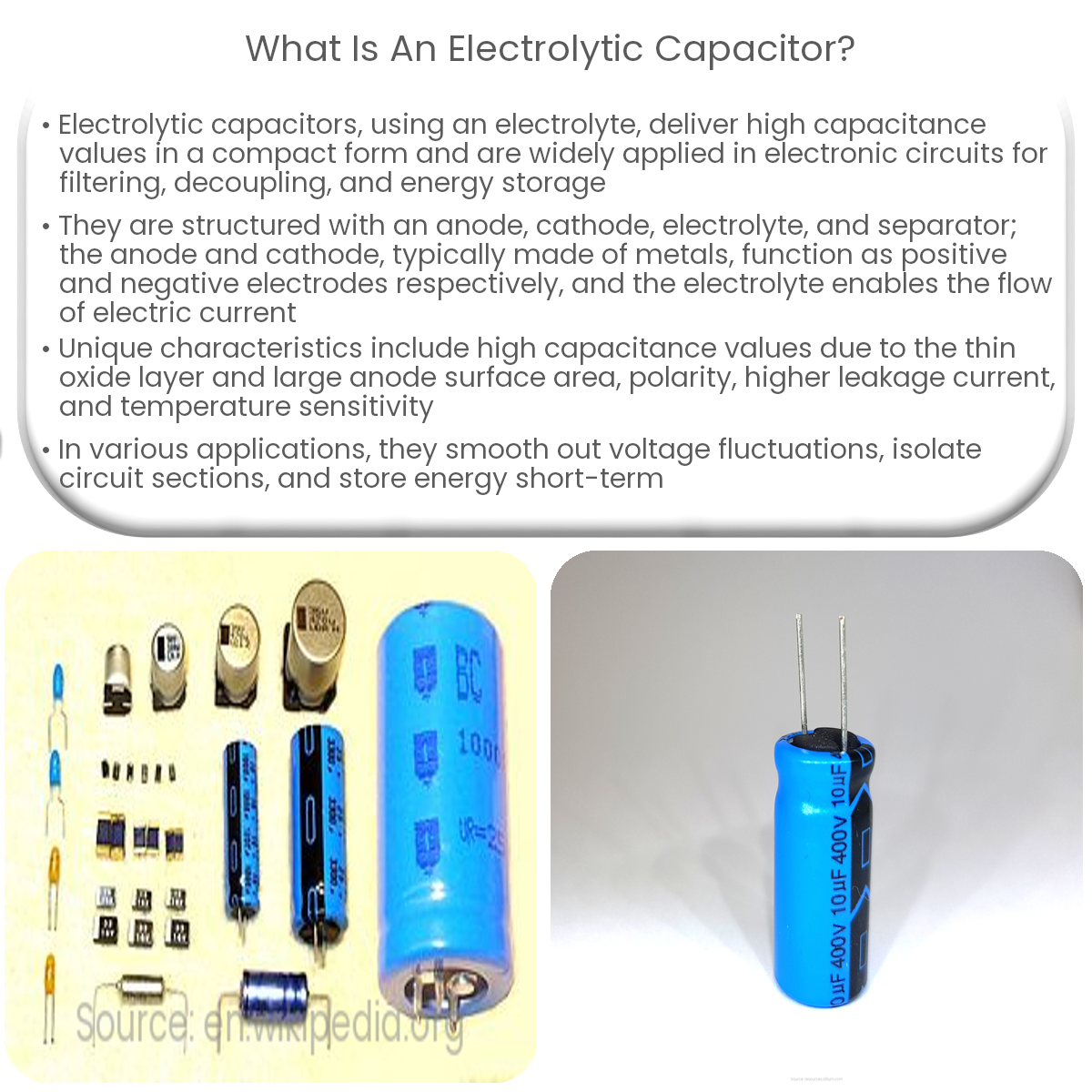An electrolytic capacitor is a polarized capacitor with high capacitance, using an electrolyte to connect the cathode to the anode’s oxide layer.
Electrolytic Capacitors: An Introduction
An electrolytic capacitor is a type of capacitor that utilizes an electrolyte to achieve high capacitance values in a relatively small package. They are widely used in electronic circuits for a variety of applications, such as filtering, decoupling, and energy storage. This article provides an overview of the structure, characteristics, and applications of electrolytic capacitors.
Structure of an Electrolytic Capacitor
An electrolytic capacitor consists of the following components:
- Anode: The anode is made of a metal, typically aluminum or tantalum, which serves as the positive electrode of the capacitor. The anode is coated with a thin oxide layer that acts as the dielectric.
- Cathode: The cathode is the negative electrode of the capacitor, typically made of a metal, such as aluminum or tantalum, or a conductive material, like graphite.
- Electrolyte: The electrolyte is a conductive liquid or gel that fills the space between the anode and the cathode. It forms a conductive path between the cathode and the oxide layer on the anode, allowing the passage of electric current.
- Separator: The separator is a non-conductive material, such as paper or plastic, that prevents direct contact between the anode and the cathode, avoiding short-circuits.
Characteristics of Electrolytic Capacitors
Electrolytic capacitors exhibit several unique characteristics, including:
- High capacitance values: Due to the thin oxide layer and the large surface area of the anode, electrolytic capacitors can provide high capacitance values in a relatively small package.
- Polarity: Unlike many other types of capacitors, electrolytic capacitors are polarized, meaning they have a positive and a negative terminal. Incorrectly connecting the capacitor can lead to malfunction or even damage.
- Leakage current: Electrolytic capacitors generally have higher leakage current than other types of capacitors due to the conductive nature of the electrolyte.
- Temperature sensitivity: The capacitance and performance of electrolytic capacitors can be affected by temperature changes, making them less suitable for high-temperature applications.
Applications of Electrolytic Capacitors
Electrolytic capacitors are widely used in electronic circuits for various purposes, such as:
- Filtering: In power supplies and audio circuits, electrolytic capacitors are used to smooth out voltage fluctuations and remove unwanted frequencies.
- Decoupling: They can be used to isolate different sections of a circuit, preventing interference and ensuring stable operation.
- Energy storage: Electrolytic capacitors can store energy for short-term use in applications like voltage regulation or energy buffering.
In conclusion, electrolytic capacitors are an essential component in many electronic circuits, providing high capacitance values, filtering, decoupling, and energy storage capabilities. Understanding their structure, characteristics, and applications is crucial for designing and troubleshooting electronic systems.


